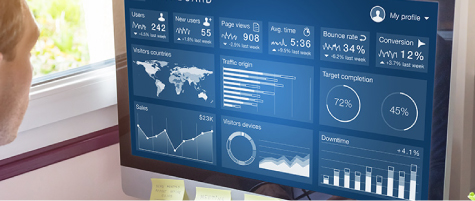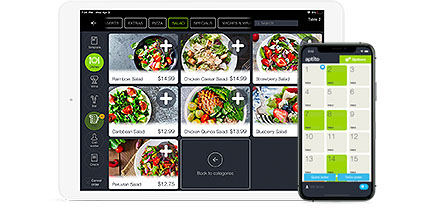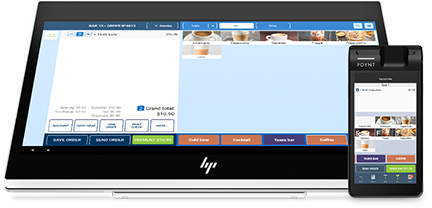
Determining Food Cost Percentage: An Essential Formula for Restauranteurs6 min read
As a restaurant owner or manager, you have to handle various types of essential expenditure. Statistics suggest that the average expenditure on food and beverages is 32 percent of a restaurant’s budget, with some of the most profitable and successful restaurants keeping this expense limited to approximately 28 to 35 percent of gross income.

There is, however, one deeper and even more important metric that few restauranteurs deal with.
Do you know what the cost of individual ingredients or types of foods is? Have you worked on a breakdown that shows the percentage expenditure of the total food budget on one specific item category?
Working on such an expenditure breakdown is going to be time-consuming and laborious. This is one of the reasons why most chefs and managers will not bother taking the expenditure breakdown to the next level.
If you’re not sure how to calculate food cost percentage and would like to take a closer look at the metric, here are some of the essentials you’ll need to master in order to ensure higher than ever financial accountability.
Calculating Food Cost in a Restaurant
There are many calculators out there supposed to simplify the process of determining an accurate food cost percentage in your restaurant.
If you want to get the most reliable figure, however, you should probably attempt to handle the calculation on your own.
The most basic formula out there to test out is the following:

Some restauranteurs adopt a different approach and calculate the cost of producing an individual meal appearing on the menu. This is done by calculating the price of all ingredients going in the respective item and dividing the total cost for the batch by the number of meals sold from the respective batch. This basic formula produces the cost per unit.
Both of these metrics matter.
The cost per unit is beneficial, especially when it comes to pricing menu items, but it does not paint a complete picture.
Restaurants deal with issues like food spoilage, receiving a bad ingredient batch that cannot be used, human error and oversized portions. All of these will increase the cost of food and the overall expenditure percentage it contributes to.
One of the best and most comprehensive formulas takes a look at inventory for a certain time period and it involves the following steps:
- List the cost of all ingredients you have received in the beginning of the respective time period. Add these numbers together.
- Track additional purchases within the same period, that have been made after the acquisition of the initial inventory.
- Take inventory once again at the beginning at the next calculation period.
- Add the number of item sales per shift over the calculation period.
- Use a more comprehensive formula to calculate the total food expenditure:

This formula brings together both types of calculations mentioned at the beginning of the section, giving you a more comprehensive idea.
Food Cost Percentage Calculation: An Actual Example
Let’s do one example based on the formula above to give you a better idea about how to put the formula to good use.
We will take a look at a restaurant that has the following numbers for a certain time period (for example – a week of operation):
- Starting inventory cost = $20,000
- Additional purchases = $2,000
- Ending inventory = $17,000
- Food sales = $12,000
Replacing each element in the formula with the respective number produces the following:
(20,000 + 2,000 – 17,000) / 12,000 = 0.417
This means that the food cost percentage for the restaurant is 41.7 percent. Based on industry averages, the percentage is slightly higher. The managerial team may consider a number of changes aimed at optimizing meal preparation and increasing food sales to bring the percentage down.
Is There Such a Thing as Ideal Food Cost?
Restaurant menu items should adequately account for costs of food and restaurant operations in order to produce sufficient revenue for the business. Food cost has to remain within the 35-percent range. Thus, if you spend one dollar on something, you should be charging your customers at least 3.35 dollars.
Such calculations should be made on the basis of the ideal food cost. Ideal food cost is a term referring to the theoretical cost of food in the restaurant minus the amount that the food you sell should have costed you.
The calculation formula here is simple – the food cost of ingredients multiplied by the weekly amount sold will give you the food cost per recipe. To calculate the idea food cost, you have to divide total recipe food cost by the total sales per item.
Let’s do one more example here. You’re working with the following figures:
- Total food cost = $3,500
- Total sales = $11,500
3,500 / 11,500 = 0.3 (Ideal food cost)
If this calculation is based on the restaurant example above, we have an actual food cost of 41.7 percent and an ideal cost of 30 percent. The restaurant will have to reduce the cost percentage by 11.7 percent in order to reach the optimal number.
How the Metric Can Help Your Business
Tracking food cost percentages will help you accomplish a number of important restaurant business goals:
Determine Operational Effectiveness

If you are spending way too much on food, chances are that your profit margin will remain negligible. There could be an operational issue standing in the way. The formula will help you identify what’s wrong.
Price Menu Items Effectively
Every single menu item should be helping you grow your business. Thus, the menu items need to be priced correctly for the restaurant operations to make sense.
Get Rid of Poor Performers (and Needless Expenses)
Based on the food cost percentage, you can identify the menu items that aren’t profitable enough and the types of ingredients you’re overspending on. The numbers give you the evidence required to make changes. You can scrap menu items, change suppliers or modify your purchases to ensure effective utilization and financial stability.
The good news is that technological solutions simplify the process of budgeting and determining your restaurant’s food cost percentage.
Accounting software is of vital importance in such instances. It simplifies the process of managing your financial records, keeping track of transactions and changes in expenditure. POS systems that come with inventory management capabilities will also simplify the tracking of your inventory and of the additional purchases you’re making.
Finally, understand the fact that a one-size-fits-all formula for food cost percentage calculation does not exist.
It’s not possible for every single restaurant out there to opt for the same percentage. Gourmet restaurants, for example, could have a food cost percentage exceeding 35 percent without suffering consequences. Fast food joints and pizzerias, on the other hand, may want to strive for a lower number.
The cost of ingredients will matter. Pasta is much cheaper than premium steaks. Don’t compare your restaurant to another facility because your menu items and the specifics of food preparation will be decisive factors for your venue’s food and beverage expenditure.
Resources:



